Kate Otten is described as an "architect of place"; a wonderful and much-needed notion in a city like Joburg where buildings are often put up in a hurry, with little regard for their surrounding environment or social context. "Fulfilling the emotional and spiritual needs of the users is as important as creating a functional space," says Otten.
This is the philosophy that has guided her practice at Kate Otten Architects (KOA) for more than 30 years. The Johannesburg-based studio is responsible for more than 160 built projects spanning idiosyncratic private homes and considered community spaces. Otten's buildings are distinctly South African, weaving together materials, skills, politics, light, and landscape to create places that nurture the human spirit.
For an art therapy centre located near the historic Regina Mundi Church in Soweto, KOA conceived of the building as a sculpture, creating a simple yet robust structure where indoor and outdoor spaces overlap in function, made beautiful through colour, shape, and texture.
If you’ve spent time on Parkhurst’s popular 4th Avenue, you’ll have engaged with the studio’s work in more ways than one. Take for instance the striking build at 30 4th Avenue, which houses shops like Groundcover and Jane Valken on the street level and offices above. KOA has also done work on a few of the converted houses on this busy retail strip, adjusting the original, closed-off facades to create a more inviting and "vibrant urban edge" to match the high street's changing face.

At the Women’s Jail at Constitution Hill, the 1909 building was in part restored and in part adapted by KOA for use as exhibition and office space. "The design enhances the cultural significance of the site," says Otten. "It provides an eloquent platform for the voices of the women who in previous decades were silenced. Architecture, rather than being a passive heritage artefact, becomes a prompt for renewal, without compromising the respect due to the past."
Meanwhile, Otten's studio and event space (and formerly her home) lulu kati kati, named after the Swahili phrase for "pearl in the middle", sits at the end of Melville's high street. It's a prime example of Otten's style of integrating building and landscape; the three-storey, lightweight timber-framed home slips between exposed rock face on a steep, north-facing ridge overlooking the koppie, while an indigenous Dombeya tree has pride of place. Bursts of colour play across the space, which changes with the seasons and daily cycles of sunlight, shadows, distant lights at night, winter veld fires, and verdant summer growth.

Photo: Kate Otten Architects.
While these are but a few examples of the fascinating projects conjured up by Otten and her team, the project we’re delving into here exists in a different realm entirely. The suggestive, unusual art installation called threads was first shown at the 2023 Venice Architecture Biennale and has subsequently been travelling around South Africa, drawing viewers into its whimsical fold. The latest destination on this whistle-stop tour is Gallery 1 at Keyes Art Mile, where threads shows as part of the group exhibition Narratives of Migration and Reclamation. Like Otten’s work, all four projects in this showcase were originally exhibited in Venice last year.
Curated by Ghanaian-Scottish architect, educator, and novelist Lesley Lokko, the 2023 Venice Architecture Biennale was different from previous events in that it focused on the Global South and featured works specifically curated for exhibition purposes instead of repackaging pre-existing projects.
"It was a phenomenal event," Otten tells us. "Lokko re-used the drywall constructions and other set-ups from the 2022 Venice Art Biennale, only removing, not adding, and creating a totally immersive and experiential journey through space. You moved from light spaces to darker areas with video, sound, and almost smell; all painted in glorious colours to bring a sense of Africa to the space. Each participant made a piece that was inspired by the work they do in response to Lokko’s prompts and provocations."
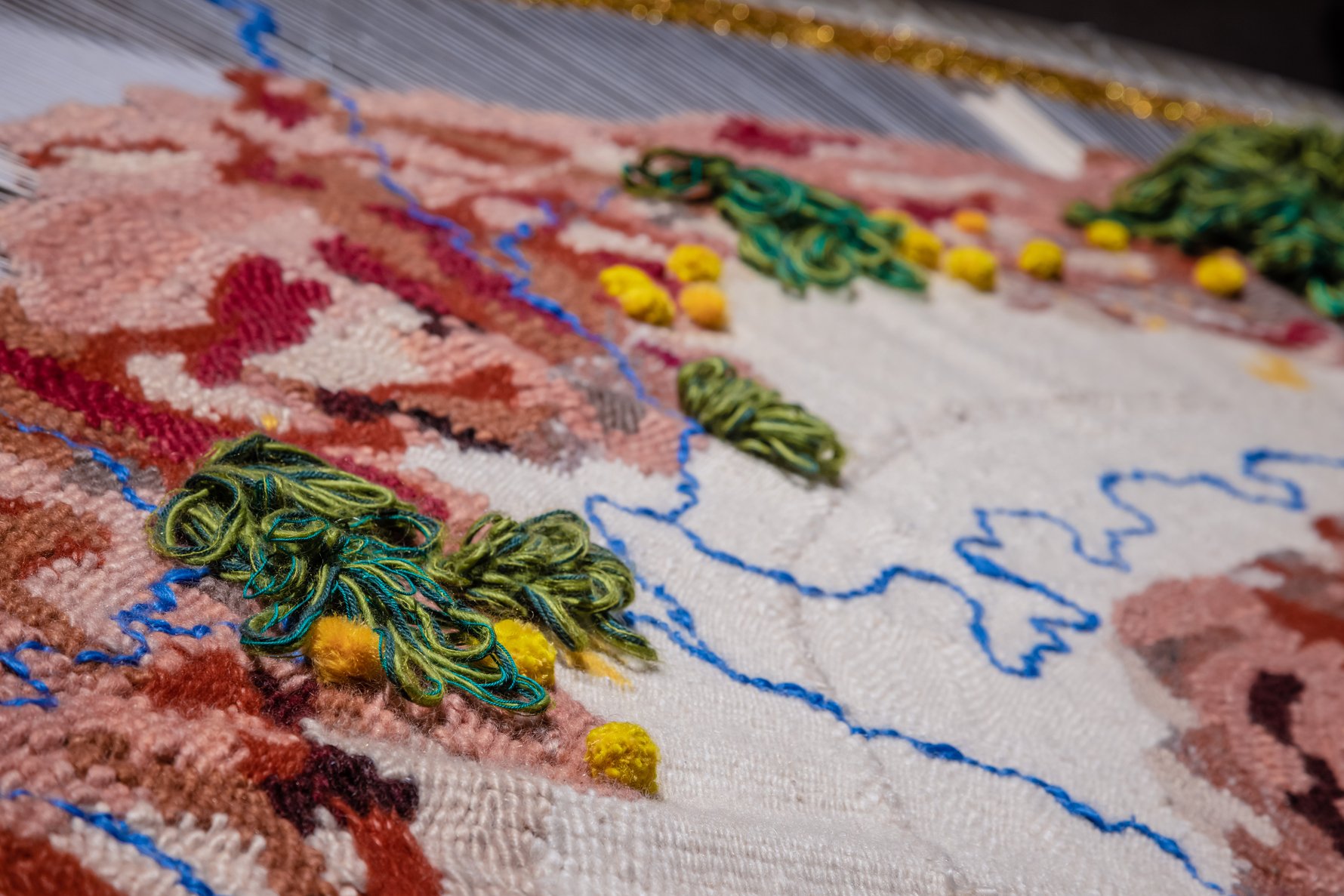
Rendered in beads and mohair, Otten's hanging disc is an impressionistic map of the Vredefort Dome – the earth's oldest known meteor crater (now a World Heritage Site) dating back some two billion years. The impact of the crash sent debris and gold deposits flying, eventually leading to the discovery of gold in 1886 and the city's establishment in the gold rush that followed. This began what Otten terms a "dangerous liaison" between land and people, as well as great wealth and exploitation.
The work itself came to life through the work of many hands; a collaboration with fibre artist Frances van Hasselt's Karoo-based studio Frances V.H and designer beadwork collective The Herd, headed by Mbali Mthethwa. Now, with threads installed at Keyes Art Mile for Joburg residents to engage with anew, we caught up with Otten to hear more about the story and process behind this unusual piece.
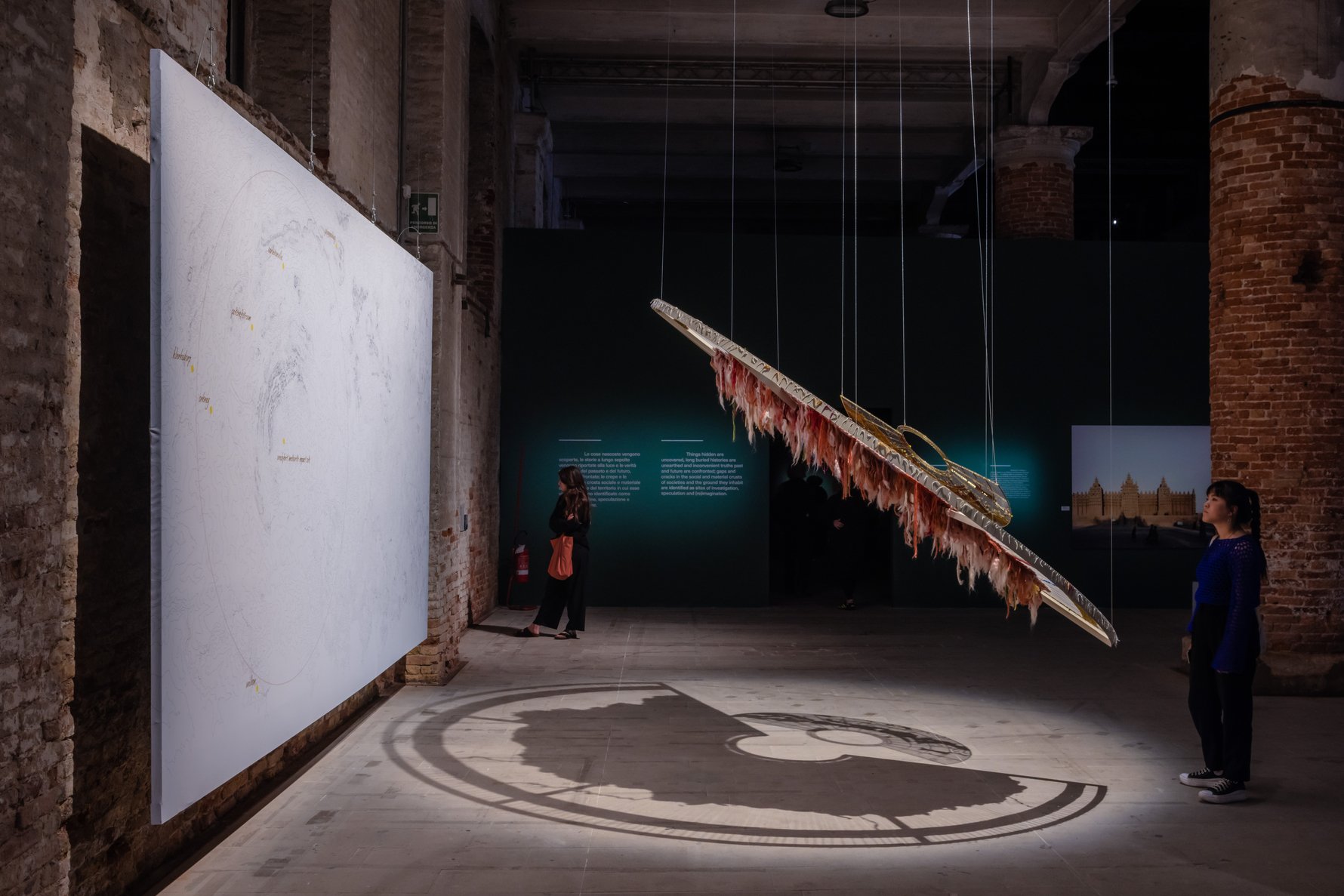
What first drew your attention to the Vredefort Dome as a site of significance and what made you want to create an impressionistic map of the place?
I have lived and worked in Joburg most of my life gathering information and wonder as I delve into her story. From the high altitude to the watershed ridge that runs between the City Centre and the northern suburbs, to the phenomenon of being one of the largest man-made forests in the world, and being uniquely situated between two World Heritage Sites, namely the Cradle of Humankind and the Vredefort Dome. How can you not wonder how all this came to be... from the meteorite that crashed into the earth two billion years ago?
Thinking that I wanted to make a tapestry of this place and our work, we started to trace the landscape, the topography, the contours that describe the shape of things, and slowly, iteratively, we arrived at a stylised arc that followed the curve of the gold mines along the ridge. Then, delving deeper still, we traced the settlements, apartheid settlement patterns of green wealthy areas and parched poor townships.
The beaded necklace part of the piece came from the desire to, metaphorically, claim the gold extracted from earth as an African artefact rather than giving up the raw material for export. This part of the piece represents the night sky above the Vredefort Dome; the shadow created below the piece completes the story and describes the geology underground – dark, unknown, and yet so present.
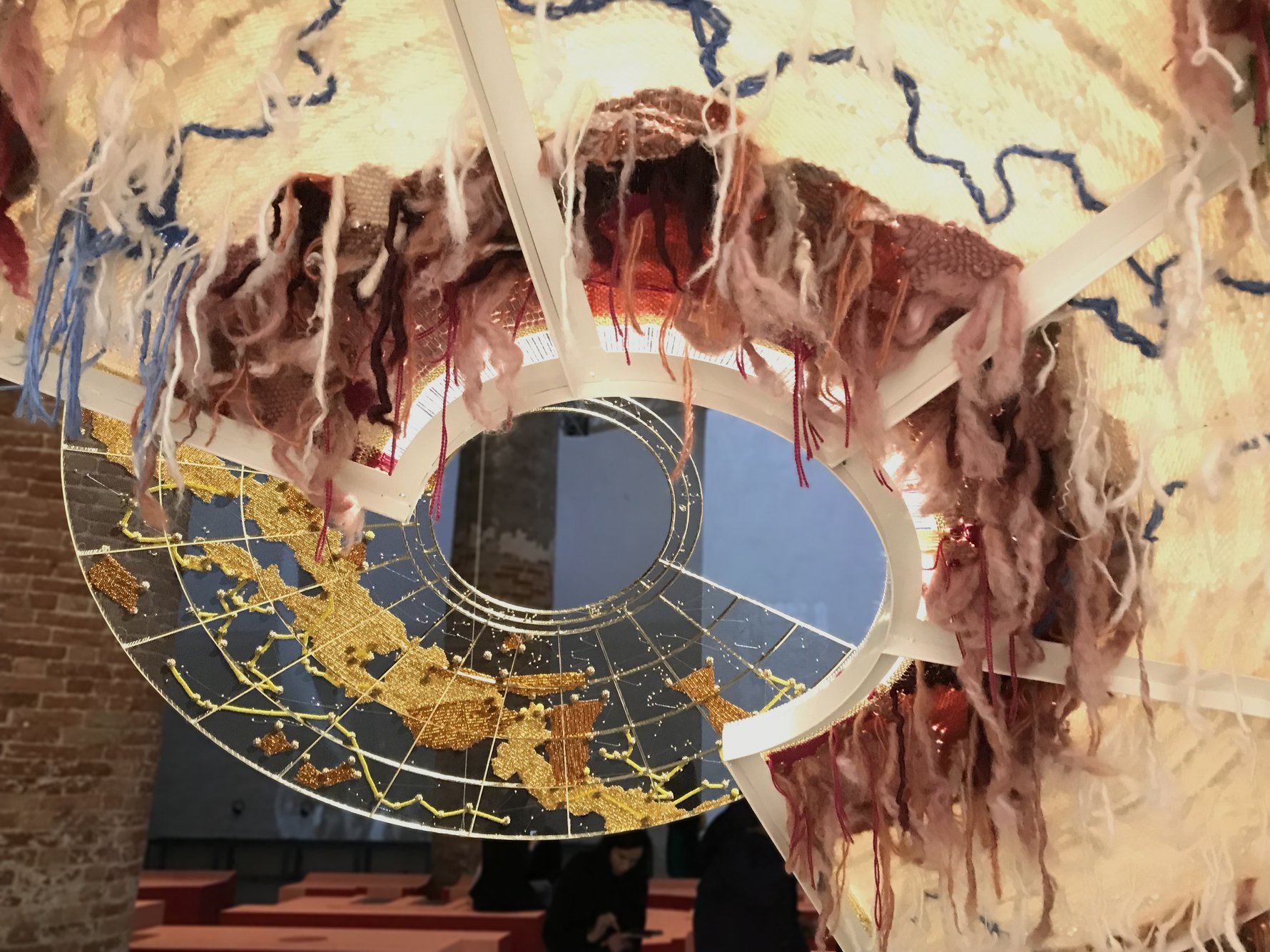
Your work threads is spellbinding; we loved seeing it at RMB Latitudes and now at Keyes Art Mile. The mediums are particularly striking – what went into producing the piece on a technical level?
We wanted the piece to represent the story we were telling in a graphic way. The circular explosion of the meteorite crashing into earth meant the loom needed to be round. This presented many challenges as it is an unusual way to weave. From the design and construction of the loom, to how it needed to be disassembled, transported, reassembled, warped, woven, and then removed from the loom and re-strung in the steel frame to be exhibited. The beading also required careful patterning and skill to get the irregular shapes from regular-shaped beads and the rows that beading naturally conforms to. And then to display the necklace and make it float above the tapestry...

What was rewarding about working with local craftspeople in this way?
The craftspeople involved in the making of this piece – Frances V.H who made the tapestry, and The Herd who crafted the beadwork – are both highly skilled and creative collectives. Both factors, the making skill and creative skill combined, really enabled the making of such a beautiful piece. We developed really special relationships and worked closely with both collectives. We relied on their judgement to know when to call, when to discuss, how to interpret our drawing, etc. It was a truly collaborative process.
What did you set out to illustrate about the history and social fabric of Johannesburg through threads, and why is this story so important today?
The idea of "women's work" is a very important conversation that underpins much of the work we have done over the years. All too often women’s stories are not told or left out of (his)tory; particularly those of rural women who have been so undermined, so disregarded, and yet, they are the ones so deeply affected by the "dangerous liaison" between land and people caused by the extraction of resources from the earth, of mining. The work threads tells this story through making, by hand, where intuition and embodied memory narrate.
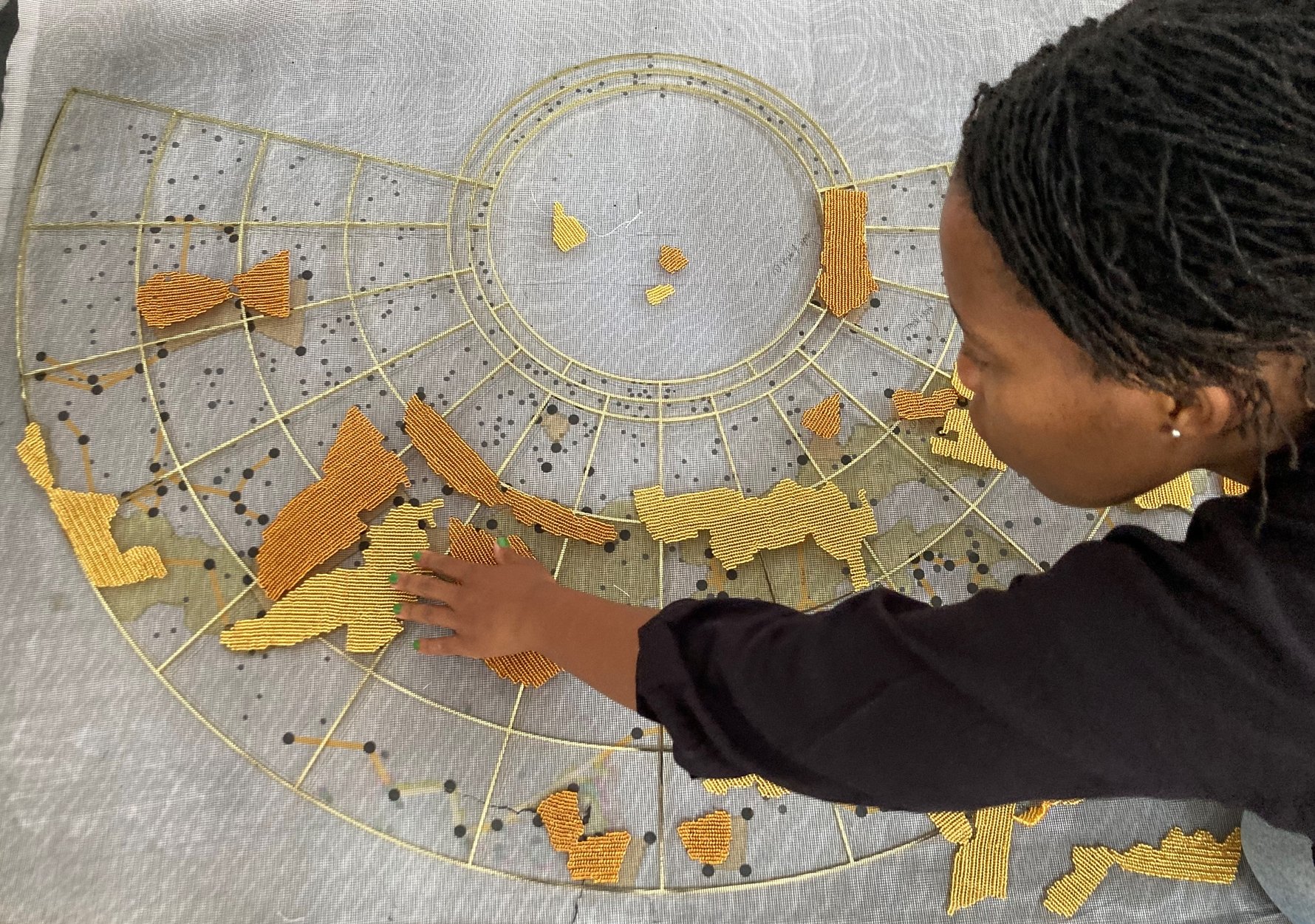
Has it been challenging to transport the work and exhibit it in different spaces? What about the reception in Venice versus Johannesburg?
Sure, it is challenging to transport, but oh, what a joy to see it come home and carefully unwrap the box to find the delicate, carefully crafted piece, all intact and ready to show herself to South Africans! The work has been shown at the 2023 Venice Architecture Biennale, the RMB Latitudes art fair, the Karoo Winter Wool Festival, and now at Keyes Art Mile.
Each exhibition has presented the work differently. In Venice, it was this jewel hanging quietly, sparkling, and much loved and photographed. At RMB Latitudes it felt good to have it on the ridge that it speaks about, but the piece was disconnected from the shadow as a result of the space, creating a different reading which is itself interesting – a dislocation even though it’s on home ground. The visit to the Karoo also connected to roots and the piece was displayed in a sheep shearing barn. Always well received and she’s quite photogenic, you know?
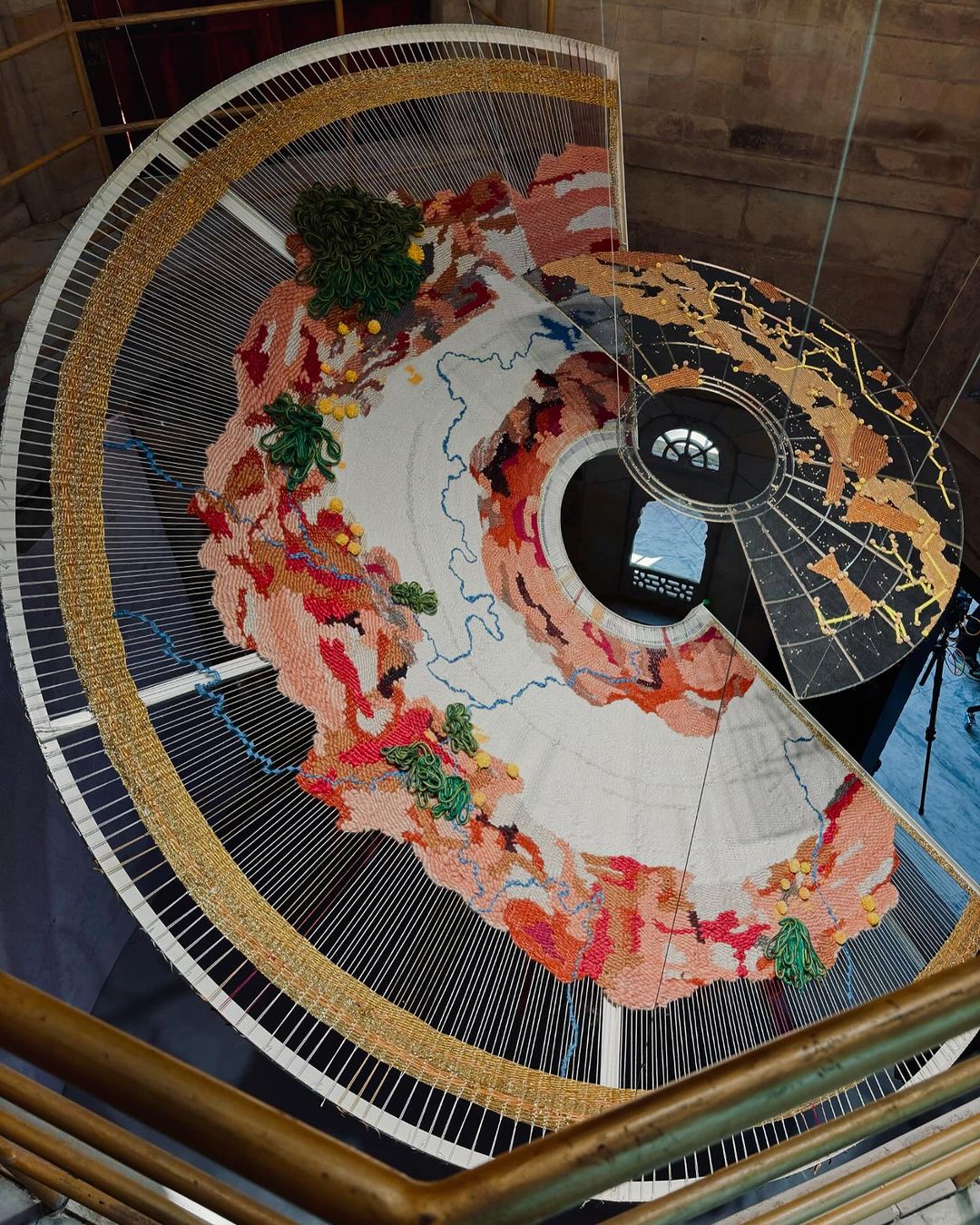
Kate Otten's threads shows at Gallery 1 at Keyes Art Mile as part of the group exhibition, Narratives of Migration and Reclamation until Sat, Aug 24. Meet the other three participating artists and find an overview of the works on show here.


_m.jpg)
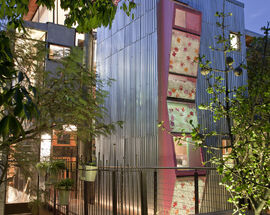
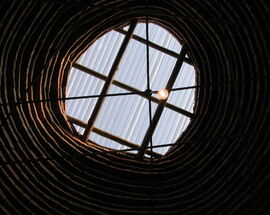


Comments